Reducing feed microbial loads improves gut health and performance
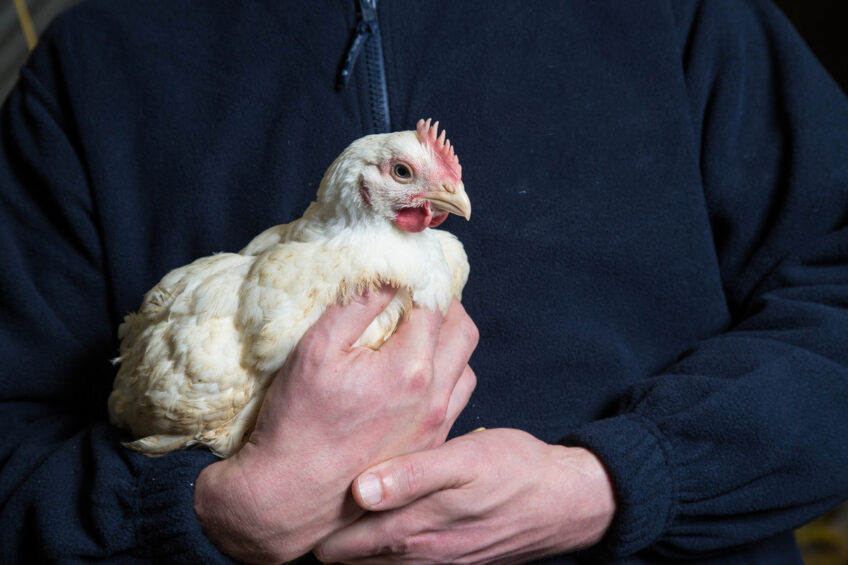
Poultry health, immunity and performance are all significantly impacted by gut health and the delicate microbial balance that resides within the gut, better known as the microbiome. Maintaining and supporting a balanced microbiome is essential to protecting the integrity of intestinal tissues and mitigating disease.
Variable microbial loads within feed challenge the microbiome and, in some cases, lead to a microbial population shift, resulting in dysbiosis.
“We know that feed is a fomite for avian pathogens, and that microbial loads in poultry rations vary,” explains Dr Enrique Montiel, Anitox Global Director of Nutrition and Live Production. “When subjected to abnormally high microbial loads, goblet cells within the GIT proliferate and produce mucus, leading to significant health and performance challenges. Keeping the microbiome balanced ensures that the GIT remains in a state of absorption versus defensive mode, which requires energy diversion to overcome the challenge. Controlling microbial loads in feed helps improve performance and minimise the risk of variable microbial loads. Increased pathogen prevalence in feed increases the risk of pathogen colonisation and dysbiosis, which has a negative impact on bird health and performance.
Pelleted feed vs non-pelleted
“Salmonella, E. coli and Clostridia are pathogens repeatedly linked to feed. Analysis of more than 2000 feed and raw material samples within the Anitox Global Feed Database demonstrates that C. perfringens incidence in feed is variable and differs between pelleted and non-pelleted feeds. Pelleted feeds typically have a lower incidence at approximately 3.65%, whereas non-pelleted feeds are considerably higher at 55%. While the incidence in pelleted feed is low, it is important to acknowledge that heat generated during pelleting is insufficient to eliminate Clostridium but can trigger sporulation. Trends from the Anitox Global Database also show that feeds and raw materials with higher microbial loads typically exhibit higher pathogen prevalence, suggesting that besides microbial load increase, the makeup of the bacterial population may also change.”
“One good example of these microbial population changes is C. perfringens, which is a normal intestinal inhabitant but can proliferate abnormally during a microbiome imbalance and cause Necrotic Enteritis. This has become increasingly problematic in recent years due to antibiotic-free production translating into real costs for poultry producers. However, recent data suggest that decreasing microbial loads in broiler feeds, especially during the first 2 weeks of life, supports the development of a healthy microflora and reduces the severity of the lesions and mortality derived from challenge.”
Sanitised feed
“In the past year, Anitox has made real strides in understanding the impact of clean feed on poultry health and performance. Our latest trials look specifically at how reducing feed microbial loads positively impacts weight gain and feed conversion during a NE challenge in broilers and lowers broiler breeder mortality, eggshell contamination and chick quality from 25 to 60 weeks of age,” says Dr Montiel
“In the first trial, broilers were feed sanitised feed through different stages of the production cycle, during the first 2 weeks of age, the entirety of the production cycle or the last two weeks of the lifecycle. Compared to the broilers fed a control diet, broilers fed sanitised feed were exposed to reduced feed microbial loads and demonstrated improved feed conversion, growth rates and mortality (Figure 1). The feed sanitiser used in this study was Termin-8. Still, we hypothesise that our non-formaldehyde feed sanitiser, Finio, would produce similar results as the driver behind these benefits is the ability of the feed sanitiser to improve feed microbial quality through reduced microbial loads.”
Figure 1- Birds fed sanitised feed demonstrated lower NE-related mortality and mortality and removal (M&R) in a NE challenge model compared to birds fed a control diet.
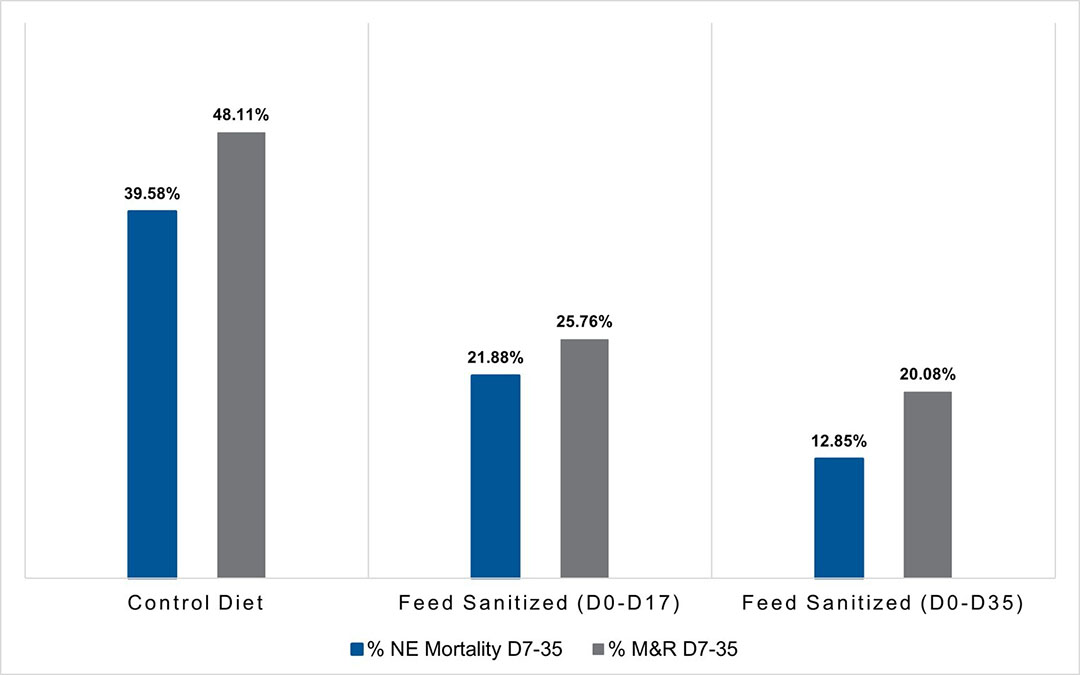
Positive improvement in chick quality
“Feed sanitiser, Termin-8, was also evaluated in a published trial by the University of Georgia. Broiler breeders were fed sanitised feed from 25 to 65 weeks of age. Researchers found that the hens fed sanitised rations displayed reduced mortality overall, but hen mortality during late lay was reduced by nearly 50% compared to hens fed the control diet. Furthermore, improvements were also seen in the chick quality (Figure 2). Hens consuming sanitised feed were exposed to significantly reduced microbial loads and produced cleaner eggs which likely contributed to the improvements observed in chick quality (Figure 3). Another example of how feed sanitation and reduced microbial loads in feed support bird health and performance.”
Figure 2- Chicks from hens fed sanitised feed were more likely to receive “Grade A” ratings.
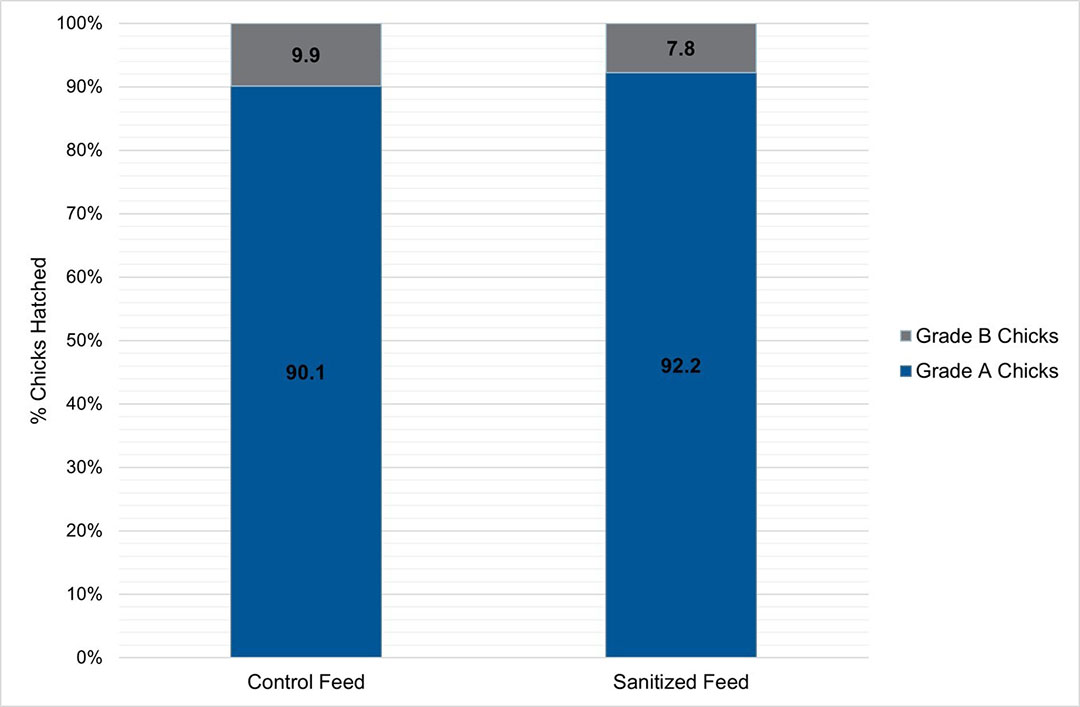
(Source: Avila et al., 2023)
Figure 3- Microbial load of eggshell surfaces for hens consuming Control vs. Sanitised diets.
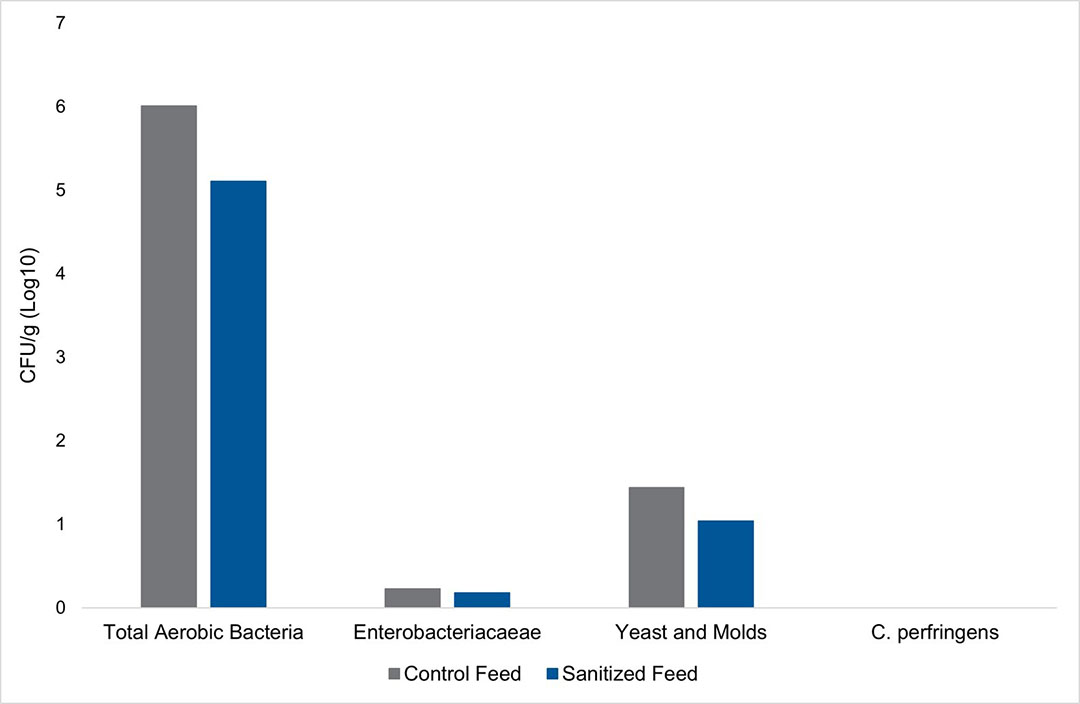
(Source: Avila et al., 2023)
Feed sanitisers are specially designed and applied to feed at low inclusion rates, effectively reducing feed microbial loads and offering long-term protection against recontamination. Anitox’s feed pathogen control portfolio contains two different feed sanitisers, both offering the highest level of pathogen control in feed.
“There is more work to come, but it is exciting to see how the technology we have typically used for feed pathogen control and food safety purposes also positively impacts poultry health and performance. Work thus far evidences that decreasing microbial loads may, in turn, help reduce pathogen prevalence in feed, and support the development of a healthy microbiome, consequently generating improvements in bird health and performance. These benefits translate directly into real revenue for producers making clean feed a cost-effective food safety and poultry performance strategy.”
To learn more about how feed sanitation can support your operational performance and productivity goals, visit www.anitox.com.
 Beheer
Beheer



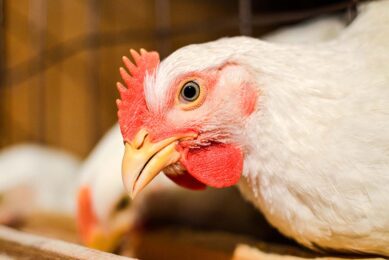
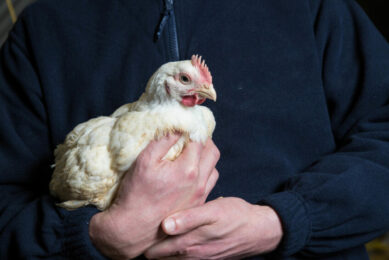
 WP Admin
WP Admin  Bewerk bericht
Bewerk bericht